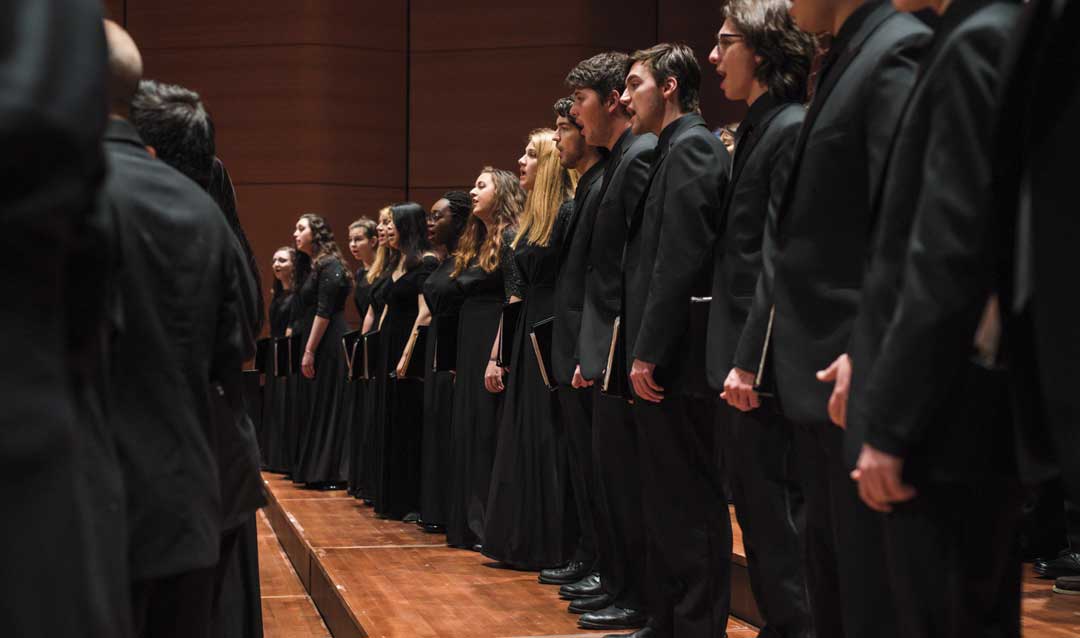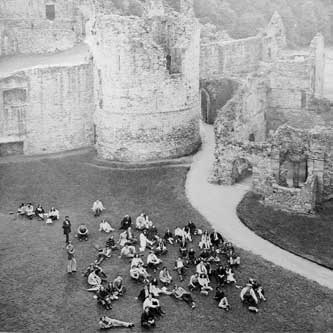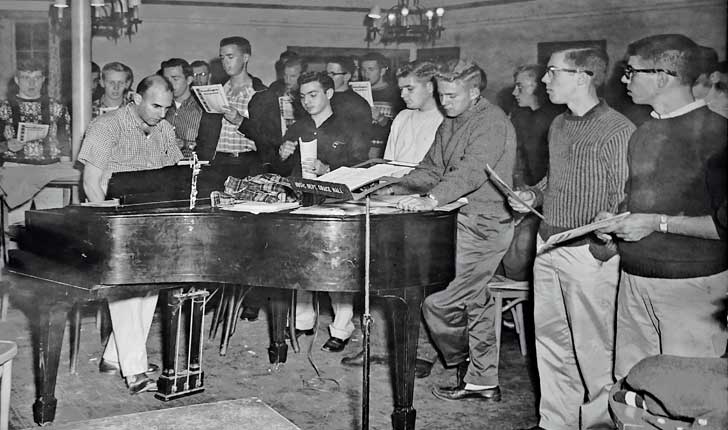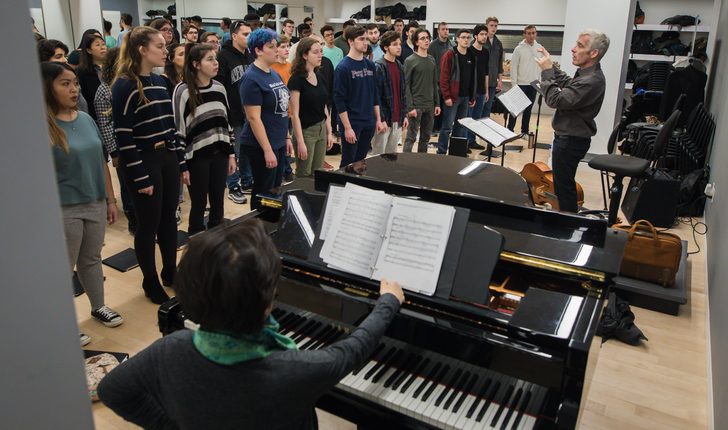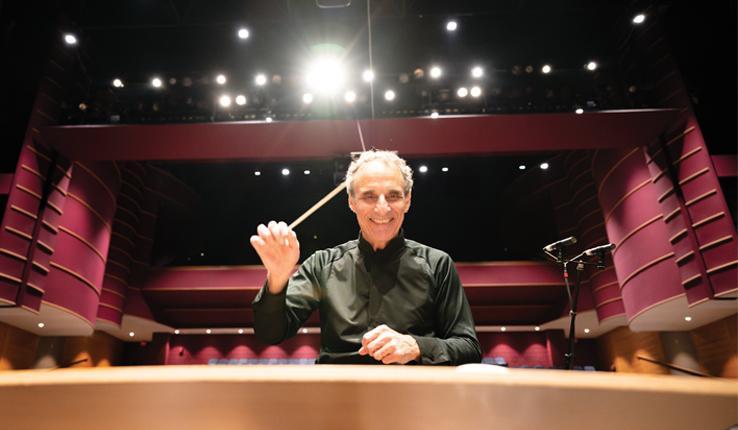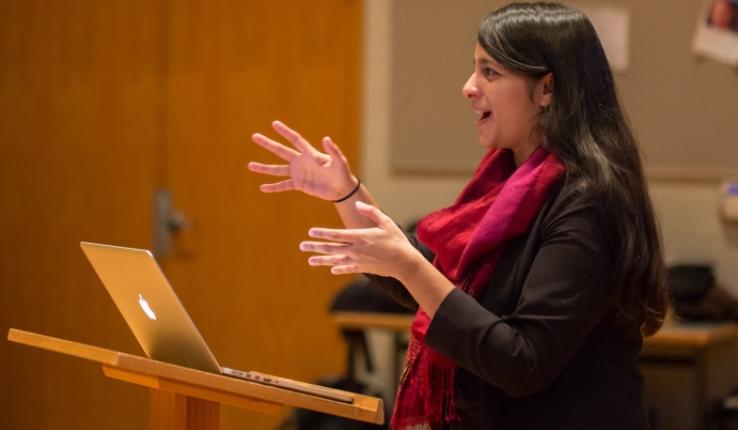It was the fall of 1979. Steven Sametz, then 25 years old, had just been appointed director of Lehigh’s choirs when he was approached by a concerned senior administrator.
“He said he didn’t think I would last,” Sametz recalls. “He told me, ‘Lehigh isn’t fertile grounds for the arts. I don’t think you’ll want to stay.’”
Today, Sametz is completing his 40th year at Lehigh. He is the Ronald J. Ulrich Professor of Music and artistic director of Lehigh University Choral Arts, and he is respected worldwide for his choral conducting and composing.
Lehigh’s student ensembles—the mixed Lehigh University Choir, the all-male Glee Club and all-female Dolce, and members of the Lehigh Choral Union—have performed in the world’s finest concert halls and cathedrals. They are renowned for their ability to sing in any language or musical genre, for reviving forgotten masterpieces and for premiering many of Sametz’s own compositions.
This year marks the 150th anniversary of organized singing at Lehigh, and Lehigh Choral Arts is celebrating with a series of events, starting with an appearance in January at New York City’s Alice Tully Hall and culminating with the annual Christmas Vespers service in Packer Memorial Church.
On March 29 and 30, in a concert called Shine On in the Zoellner Arts Center, Choral Arts traced the history of choral singing at the university.
Lehigh’s student musicians, in compiling the history, discovered what Sametz’s older colleague missed years ago—that the choirs’ modern successes have deep roots in very fertile artistic soil.


